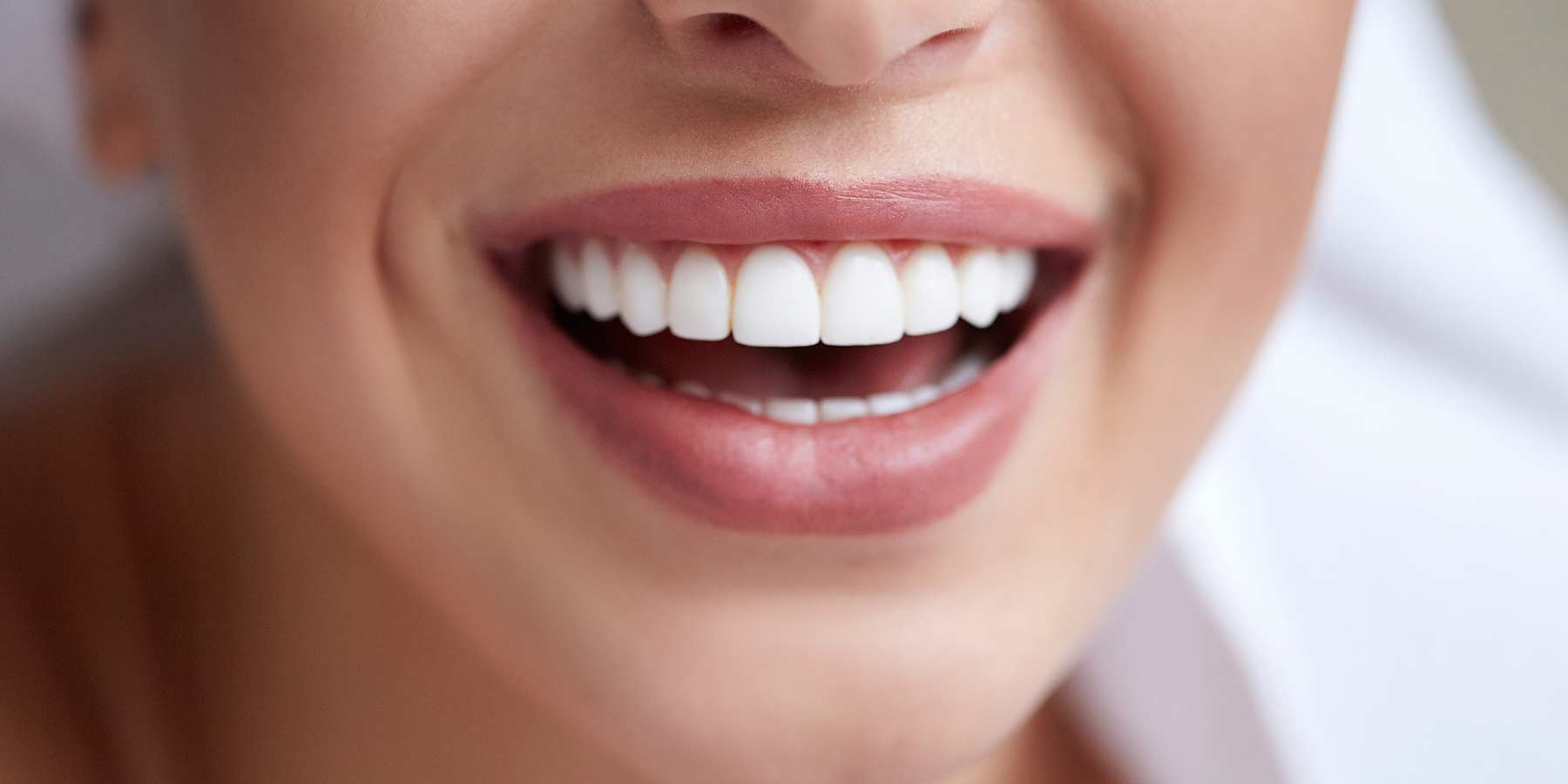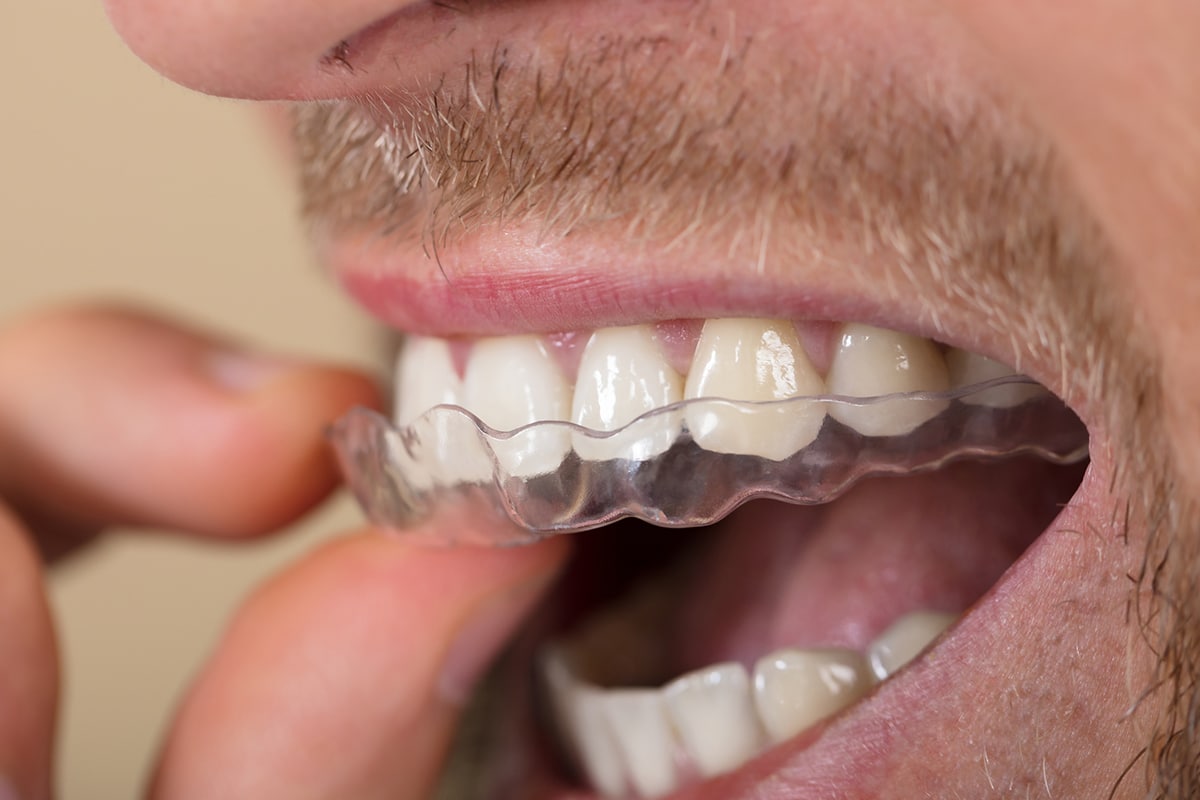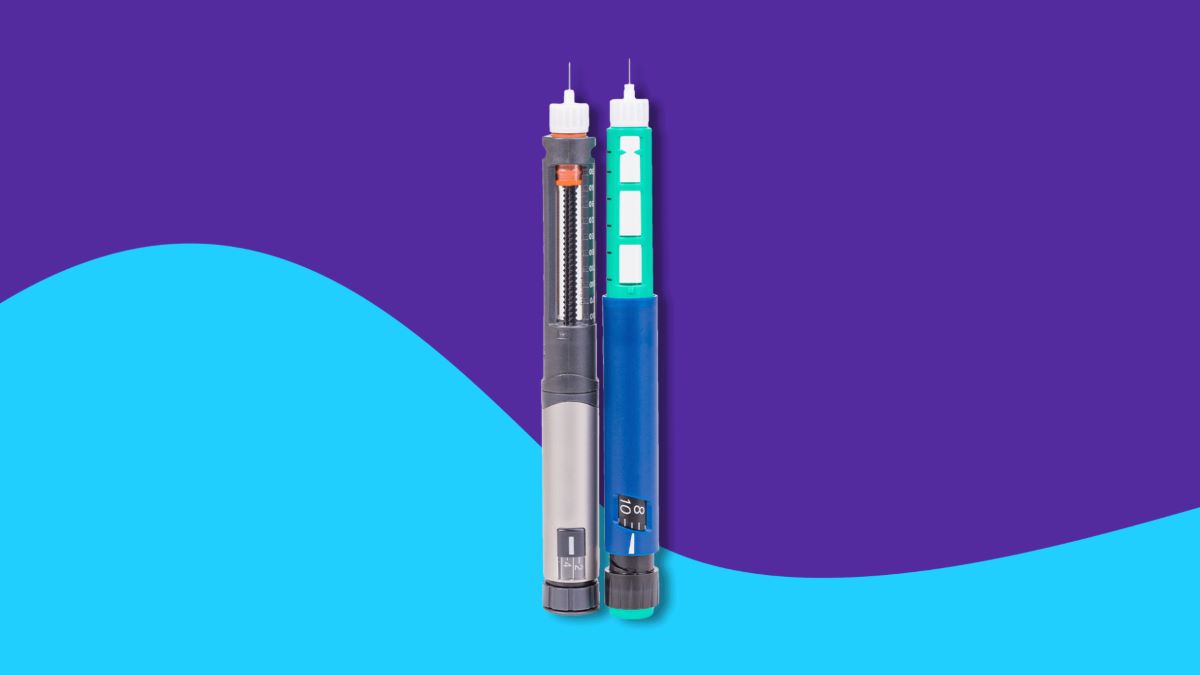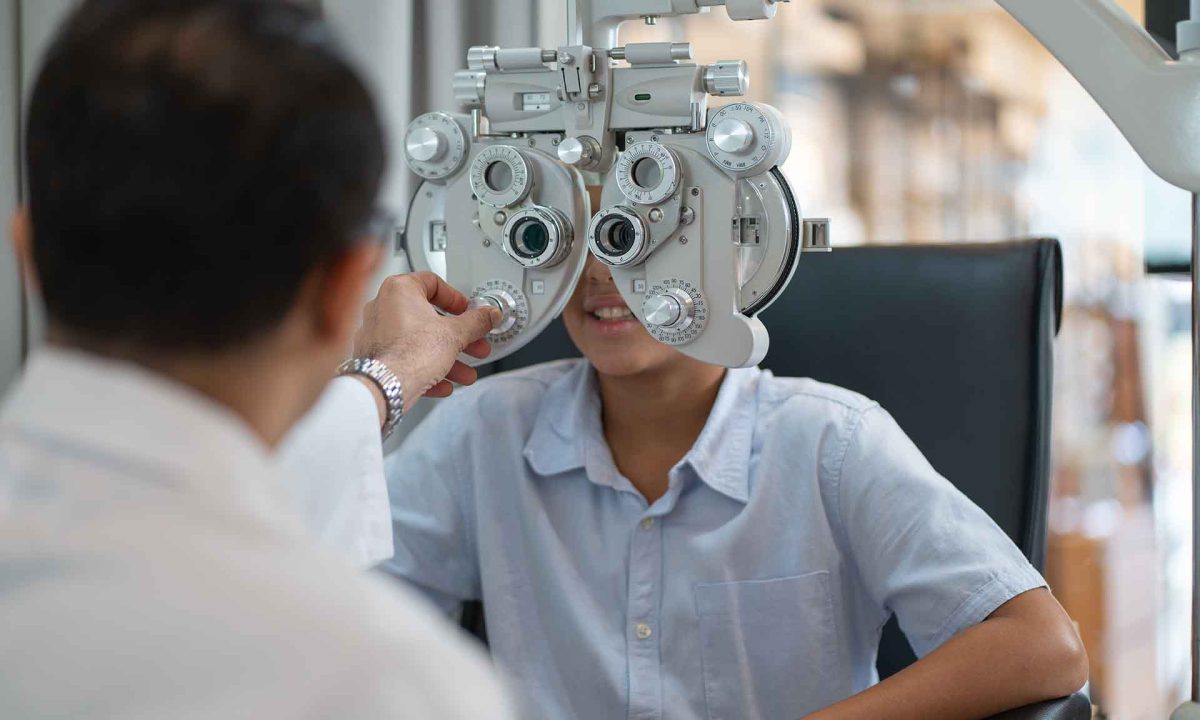

Finance
What Insurance Covers Cosmetic Dentistry?
Published: November 10, 2023
Looking for information on what insurance covers cosmetic dentistry? Explore the financial options available to help you pay for these procedures.
(Many of the links in this article redirect to a specific reviewed product. Your purchase of these products through affiliate links helps to generate commission for LiveWell, at no extra cost. Learn more)
Table of Contents
- Introduction
- Understanding Cosmetic Dentistry
- Types of Cosmetic Dentistry Procedures
- Importance of Insurance Coverage for Cosmetic Dentistry
- Common Insurance Coverage for Cosmetic Dentistry
- Dental Insurance Plans with Cosmetic Dentistry Coverage
- Limitations and Exclusions in Cosmetic Dentistry Coverage
- Alternative Financing Options for Cosmetic Dentistry Procedures
- Tips for Maximizing Insurance Coverage for Cosmetic Dentistry
- Conclusion
Introduction
Welcome to the world of cosmetic dentistry, where transforming smiles into something extraordinary is the ultimate goal. With advancements in dental technology and the increasing demand for a perfect smile, cosmetic dentistry has become more popular than ever before. However, the cost of cosmetic dental procedures can be a significant financial burden for many individuals.
That’s where insurance coverage for cosmetic dentistry comes into play. Insurance providers understand the importance of dental health and the impact it has on one’s overall well-being. As a result, many insurance plans now offer coverage for cosmetic dental procedures, helping individuals achieve their dream smile without breaking the bank.
In this article, we will explore the world of cosmetic dentistry and the various insurance options available to cover the costs. We will discuss the different types of cosmetic dentistry procedures, the importance of insurance coverage, common insurance plans that offer cosmetic dentistry coverage, limitations and exclusions to be aware of, alternative financing options, and tips for maximizing insurance coverage.
Whether you are considering teeth whitening, veneers, dental implants, or any other cosmetic dental procedure, understanding your insurance options will be instrumental in making informed decisions about your dental health and financial well-being.
So, let’s dive into the realm of cosmetic dentistry and discover how insurance can help you achieve the smile you’ve always dreamed of.
Understanding Cosmetic Dentistry
Cosmetic dentistry is a specialized branch of dentistry that focuses on improving the appearance of teeth, gums, and overall smile. While traditional dentistry focuses on treating oral health issues like cavities, gum disease, and tooth decay, cosmetic dentistry goes beyond the functional aspects and aims to enhance the aesthetic appeal of one’s smile.
With advancements in dental technology, cosmetic dentistry can address a wide range of cosmetic concerns, including stained or discolored teeth, misaligned teeth, gaps between teeth, chipped or cracked teeth, and even missing teeth.
Some of the common cosmetic dentistry procedures include:
- Teeth Whitening: This procedure involves the use of bleaching agents to remove stains and discoloration from the teeth, resulting in a brighter and more radiant smile.
- Dental Veneers: Veneers are thin, custom-made shells that are bonded to the front surface of the teeth to improve their appearance. They can be used to enhance the shape, size, color, and alignment of the teeth.
- Dental Implants: Implants are used to replace missing teeth. They are surgically placed in the jawbone and serve as a sturdy foundation for artificial teeth, providing a natural-looking and functional solution for tooth loss.
- Invisalign: Invisalign is a popular orthodontic treatment that uses clear aligners to gradually straighten misaligned teeth. Unlike traditional braces, these transparent aligners are virtually invisible and can be easily removed for eating and brushing.
- Dental Bonding: Bonding is a procedure where tooth-colored resin materials are applied and sculpted onto the tooth surface to repair chips, cracks, and gaps.
It’s important to note that while cosmetic dentistry primarily focuses on enhancing aesthetics, it can also have functional benefits. For example, straightening misaligned teeth not only improves the smile’s appearance but also helps prevent dental problems like tooth decay and gum disease, as it becomes easier to clean and maintain oral hygiene.
Now that we have a better understanding of cosmetic dentistry and the various procedures involved, let’s explore the importance of insurance coverage in making these smile-enhancing treatments more accessible and affordable.
Types of Cosmetic Dentistry Procedures
Cosmetic dentistry encompasses a wide range of procedures that can address various aesthetic concerns and help individuals achieve their desired smile. Here are some of the most common types of cosmetic dentistry procedures:
- Teeth Whitening: This procedure is designed to lighten the color of the teeth by removing stains and discoloration. It can be done in-office by a dental professional or at home using custom-fitted trays and whitening gels.
- Dental Veneers: Veneers are thin, custom-made shells that are bonded to the front surface of the teeth. They can improve the appearance of stained, chipped, misaligned, or unevenly spaced teeth, creating a beautiful and natural-looking smile.
- Dental Implants: Dental implants are a long-lasting solution for replacing missing teeth. They involve surgically placing titanium posts into the jawbone to serve as anchors for artificial teeth. Implants not only restore the appearance of a complete smile but also provide functional benefits by restoring biting and chewing abilities.
- Invisalign: This orthodontic treatment involves using a series of clear, removable aligners to straighten crooked or misaligned teeth. Invisalign is a popular choice for individuals who desire a discreet alternative to traditional braces.
- Dental Crowns: Crowns are custom-made caps that cover damaged or decayed teeth. They restore the shape, size, strength, and appearance of the affected tooth, enhancing both its functionality and aesthetics.
- Dental Bonding: Bonding is a procedure in which a tooth-colored resin material is applied and sculpted onto the tooth to repair chips, cracks, discoloration, and gaps. This quick and cost-effective treatment can significantly improve the appearance of the affected tooth.
These are just a few examples of the cosmetic dentistry procedures available today. Each treatment is tailored to address specific dental concerns and can be combined to create a comprehensive smile makeover plan. It’s important to consult with a trusted dentist who specializes in cosmetic dentistry to determine the most suitable treatment options for your unique needs and goals.
Now that we have explored the different types of cosmetic dentistry procedures, let’s dive into why insurance coverage is crucial in making these treatments more accessible and affordable for individuals seeking to enhance their smiles.
Importance of Insurance Coverage for Cosmetic Dentistry
Insurance coverage for cosmetic dentistry plays a vital role in making these elective dental procedures more accessible and affordable for individuals. While cosmetic dentistry is often considered elective and not medically necessary, it can have a significant impact on a person’s self-confidence, wellbeing, and quality of life.
Here are some key reasons why insurance coverage for cosmetic dentistry is important:
- Financial Assistance: Cosmetic dental procedures can be quite expensive, and without insurance coverage, the cost can be a deterrent for many individuals seeking to enhance their smiles. Insurance coverage helps reduce the financial burden by covering a portion of the treatment costs, making it more affordable and accessible for those who otherwise may not be able to afford it.
- Improved Oral Health: While cosmetic dentistry primarily focuses on enhancing the appearance of teeth and the smile, many procedures also offer functional benefits. For example, dental implants not only restore missing teeth but also help preserve the integrity of the jawbone and prevent the shifting of surrounding teeth. Insurance coverage encourages individuals to seek necessary cosmetic dental treatments that can improve their oral health in the long run.
- Enhanced Self-Confidence: A beautiful smile can have a positive impact on an individual’s self-esteem and overall confidence. By providing insurance coverage for cosmetic dentistry, individuals are given the opportunity to achieve the smile they have always desired, boosting their self-confidence and improving their mental well-being.
- Preventative Care: Insurance coverage for cosmetic dentistry often includes preventive services, such as regular dental cleanings and examinations. These services are essential in maintaining oral health, identifying potential issues early on, and preventing more extensive and expensive dental treatments down the line.
- Access to Quality Providers: Insurance coverage helps individuals connect with reputable dentists who specialize in cosmetic dentistry. This ensures that patients receive the highest quality of care and have access to the latest advancements in dental technology and techniques.
It’s important to note that not all insurance plans offer coverage for cosmetic dentistry. However, with the growing demand for these procedures, more insurance providers are recognizing the importance of coverage and offering specific plans that cater to cosmetic dental needs.
In the next section, we will explore the common insurance coverage options available for cosmetic dentistry and how they can help individuals achieve their smile goals while managing their expenses.
Common Insurance Coverage for Cosmetic Dentistry
While cosmetic dentistry is typically considered elective, there are insurance plans that offer coverage for certain cosmetic dental procedures. It’s important to note that coverage varies depending on the insurance provider and the specific plan. Here are some common insurance coverage options for cosmetic dentistry:
- Teeth Whitening: Some insurance plans may provide coverage for teeth whitening procedures, especially if there is a medical necessity, such as severe staining or discoloration due to certain medications or medical conditions.
- Dental Veneers: In some cases, insurance plans may offer coverage for dental veneers if they are deemed necessary to correct a functional issue or to restore damaged teeth. However, coverage for purely cosmetic reasons may be limited or excluded.
- Dental Implants: Insurance coverage for dental implants can vary significantly. Some plans may cover a portion of the implant procedure if it is necessary for functional reasons, such as replacing a missing tooth due to trauma or disease. However, coverage for replacing missing teeth solely for cosmetic purposes may be limited or excluded.
- Orthodontic Treatment: Insurance plans that include orthodontic coverage may provide benefits for orthodontic treatments like Invisalign or traditional braces. While orthodontic treatment is often considered medically necessary, coverage for purely cosmetic reasons may be limited.
It’s important to review your insurance plan’s policy documents or speak with a representative to understand the specifics of your coverage. Some plans may have waiting periods, exclusions, or limitations on coverage for cosmetic dentistry procedures. Additionally, coverage may be subject to deductibles, co-pays, and annual maximums.
If your current insurance plan does not provide coverage for cosmetic dentistry or has limited coverage, you may consider exploring other insurance options that offer more comprehensive coverage in this area. Additionally, you can also consider alternative financing options, which we will discuss further in a later section.
Now that we have explored common insurance coverage options for cosmetic dentistry, let’s delve into dental insurance plans that specifically include coverage for these procedures.
Dental Insurance Plans with Cosmetic Dentistry Coverage
While dental insurance plans typically focus on providing coverage for necessary and preventive dental care, some plans include coverage for certain cosmetic dentistry procedures. It’s important to note that not all dental insurance plans offer cosmetic dentistry coverage, and the extent of coverage can vary. Here are some dental insurance plans that may include coverage for cosmetic dentistry:
- Enhanced Dental Insurance Plans: Some dental insurance plans specifically offer enhanced coverage for cosmetic dental procedures. These plans may cover a portion of the cost for treatments like dental veneers, teeth whitening, and orthodontic treatments, such as Invisalign or traditional braces. It’s important to carefully review the details of these plans to understand the specific procedures that are covered and any limitations or exclusions.
- Cosmetic Dental Discount Plans: While not technically insurance, cosmetic dental discount plans can provide significant savings on various cosmetic dentistry procedures. These plans work by offering discounted rates at participating dental providers, making cosmetic treatments more affordable. Discount plans may cover a wide range of procedures, including teeth whitening, veneers, dental implants, and more. It’s important to carefully review the terms and conditions of the plan and ensure that the participating providers meet your specific needs and expectations.
- Employer-sponsored Dental Insurance Plans: Some employer-sponsored dental insurance plans may offer coverage for cosmetic dentistry procedures, depending on the specific coverage choices made by the employer. These plans may provide benefits for procedures like dental veneers, teeth whitening, and orthodontic treatments. It’s important to review the plan documents and speak with the plan administrator to understand the provided coverage and any limitations or exclusions.
- Individual or Family Dental Insurance Plans: Certain individual or family dental insurance plans may include limited coverage for cosmetic dental procedures. These plans typically focus on preventive and necessary dental care but may provide some benefits for procedures like teeth whitening or orthodontic treatment. It’s essential to carefully review the plan details, coverage limitations, and exclusions.
When selecting a dental insurance plan with cosmetic dentistry coverage, it’s important to consider the specific procedures you are interested in and the level of coverage provided. It’s also crucial to understand any waiting periods, deductibles, co-pays, and annual maximums associated with the plan.
It’s important to note that insurance coverage for cosmetic dentistry is generally limited and may have certain exclusions or limitations based on the plan and insurance provider. However, even partial coverage can significantly reduce the financial burden of these elective dental procedures.
In the next section, we will explore the limitations and exclusions to be aware of when it comes to insurance coverage for cosmetic dentistry.
Limitations and Exclusions in Cosmetic Dentistry Coverage
When it comes to insurance coverage for cosmetic dentistry, it’s important to be aware of the limitations and exclusions that may apply. While some dental insurance plans offer coverage for certain cosmetic procedures, there are often specific conditions and restrictions that policyholders should understand. Here are some common limitations and exclusions to be aware of:
- Cosmetic Purposes Only: Many insurance plans only provide coverage for cosmetic dental procedures if they are deemed medically necessary. This means that if the procedure is solely for cosmetic purposes, such as teeth whitening or veneers to improve the appearance of the teeth, it may not be covered.
- Pre-Authorization Requirements: Some insurance plans require pre-authorization or pre-approval before undergoing cosmetic dental procedures. This means that policyholders need to obtain permission from the insurance provider before proceeding with the treatment in order to be eligible for coverage.
- Waiting Periods: Insurance plans may have waiting periods before coverage for cosmetic dentistry procedures becomes effective. This means that individuals may need to wait a certain period of time after enrolling in the plan before they can receive coverage for cosmetic treatments.
- Annual Maximums: Most dental insurance plans have an annual maximum amount that they will pay towards dental treatments each year. This maximum amount may apply to cosmetic dentistry procedures as well. Once the maximum is reached, any additional costs would need to be paid out of pocket.
- Out-of-Network Limitations: Some dental insurance plans may have limitations on coverage for cosmetic dental procedures performed by out-of-network providers. This means that policyholders may need to select a dentist within the insurance network to receive the full benefits of coverage.
- Exclusions for Certain Procedures: Insurance plans may specifically exclude coverage for certain cosmetic dental procedures. For example, some plans may not cover teeth whitening or orthodontic treatments for purely cosmetic reasons.
- Case-by-Case Determination: In some instances, insurance coverage for cosmetic dentistry procedures may be determined on a case-by-case basis. This means that the insurance provider will assess the individual’s specific situation and determine the coverage based on the particular circumstances.
It’s essential to carefully review the policy documents of your dental insurance plan, including any limitations and exclusions related to cosmetic dentistry coverage. Understanding these limitations will help you make informed decisions about your dental health and financial responsibilities.
In the next section, we will explore alternative financing options that can help individuals manage the costs of cosmetic dentistry procedures in cases where insurance coverage is limited or not available.
Alternative Financing Options for Cosmetic Dentistry Procedures
In cases where insurance coverage for cosmetic dentistry is limited or not available, there are alternative financing options that can help individuals manage the costs of these procedures. These options can provide the flexibility to pay for cosmetic dentistry treatments over time. Here are some alternative financing options to consider:
- Payment Plans with the Dental Provider: Many dental offices offer payment plans that allow patients to spread out the cost of cosmetic dentistry procedures over a period of time. These plans often involve making monthly payments without accruing interest. It’s advisable to discuss your financial situation with the dental provider and explore whether they offer such payment plans.
- Credit Cards or Personal Loans: Using credit cards or personal loans is another way to finance cosmetic dentistry procedures. Depending on your credit terms and interest rates, this option allows you to pay for the treatment upfront and then make monthly payments on the loan or credit card balance over time.
- Healthcare Financing Companies: There are dedicated healthcare financing companies that specialize in providing financing options specifically for medical and dental procedures. These companies offer flexible payment plans with low-interest rates or even interest-free options for a specific period of time. CareCredit and LendingClub are examples of popular healthcare financing companies.
- Crowdfunding: Crowdfunding platforms allow individuals to raise funds for various purposes, including cosmetic dentistry procedures. By sharing your story and treatment goals, friends, family, and even strangers may be willing to contribute towards your dental expenses.
- Savings Accounts: If you have a dedicated healthcare savings account, such as a Health Savings Account (HSA) or a Flexible Spending Account (FSA), you can use the funds saved in these accounts to pay for eligible cosmetic dentistry procedures. These accounts offer tax benefits and allow you to set aside pre-tax money for qualifying medical and dental expenses.
Remember to carefully consider the terms, interest rates, and repayment options associated with any financing option you choose. It’s essential to select a financing method that aligns with your financial situation and goals.
Additionally, before committing to any financing option, it’s important to thoroughly discuss the treatment costs, financing options, and payment plans with your dental provider. They can help guide you in making the best decision for your specific circumstances.
Now that we have explored alternative financing options, let’s discuss some tips for maximizing insurance coverage for cosmetic dentistry.
Tips for Maximizing Insurance Coverage for Cosmetic Dentistry
While insurance coverage for cosmetic dentistry may have limitations, there are several tips you can follow to maximize your insurance benefits and minimize out-of-pocket expenses. Here are some tips to consider when seeking insurance coverage for cosmetic dentistry:
- Review Your Insurance Plan: Carefully review your insurance plan’s policy documents to understand what procedures are covered and any limitations or exclusions that may apply. This will help you determine the extent of your coverage and plan accordingly.
- Consult with Your Dentist: Before undergoing any cosmetic dentistry procedures, consult with your dentist. They can provide guidance on the most suitable treatment options and help determine if the procedure will be covered by your insurance plan.
- Pre-Authorization: If your insurance plan requires pre-authorization for cosmetic dentistry procedures, ensure that you follow the necessary steps to obtain approval before proceeding with the treatment. Failure to obtain pre-authorization may result in limited or no coverage.
- Combine Cosmetic and Restorative Procedures: Some cosmetic dentistry procedures can also provide restorative benefits. For example, dental implants can replace missing teeth, improving both aesthetics and functionality. By highlighting the restorative benefits of a procedure, you may increase the chances of insurance coverage.
- Utilize Annual Maximums: Understand the annual maximum coverage provided by your insurance plan. If you have multiple cosmetic dentistry procedures in mind, strategically plan their scheduling to make the most of your annual coverage limit.
- Consider In-Network Providers: Opting for dentists within your insurance network can help ensure that you receive the full benefits of your coverage. Out-of-network providers may result in higher out-of-pocket expenses.
- Submit Accurate Documentation: Provide thorough documentation, including dental records, X-rays, and treatment plans, to support the medical necessity of the cosmetic procedure, if applicable. Accurate and detailed documentation can increase the likelihood of insurance approval.
- Appeal Denied Claims: If your insurance claim for a cosmetic dentistry procedure is denied, consider appealing the decision. Provide additional relevant documentation and information that supports the medical necessity or functional benefits of the procedure. Sometimes, additional information can change the outcome of the claim.
- Explore Supplemental Coverage: In some cases, supplemental dental insurance plans or riders may provide additional coverage specifically for cosmetic dentistry procedures. Research and explore these options to enhance your coverage.
Remember, each dental insurance plan is different, and coverage for cosmetic dentistry may vary. It’s important to thoroughly understand your plan and communicate with your insurance provider to get a clear understanding of what is covered and what isn’t.
If your insurance coverage is limited or not available for cosmetic dentistry, alternative financing options can help make these procedures more affordable. Consider exploring those options to help manage the costs.
Now that we have discussed tips for maximizing insurance coverage, let’s conclude our exploration of insurance coverage for cosmetic dentistry.
Conclusion
Cosmetic dentistry offers individuals the opportunity to achieve the smile they’ve always dreamed of. While insurance coverage for cosmetic dentistry may have limitations, it is still possible to navigate the financial aspect of these procedures. Understanding your insurance plan, exploring coverage options, and utilizing alternative financing methods can help you achieve your desired smile while managing costs.
Insurance coverage for cosmetic dentistry can provide financial assistance, improve oral health, enhance self-confidence, and offer access to quality providers. However, coverage is often limited to procedures deemed medically necessary or may have specific restrictions and exclusions. It’s essential to review your plan’s policy documents, consult with your dentist, and explore the specific coverage options available to you.
In cases where insurance coverage is limited or not available, alternative financing options such as payment plans with the dental provider, credit cards or personal loans, healthcare financing companies, crowdfunding, and dedicated savings accounts can help make cosmetic dentistry procedures more accessible and affordable.
By following the tips for maximizing insurance coverage, including reviewing your plan, consulting with your dentist, utilizing annual maximums, and providing thorough documentation, you can make the most of your insurance benefits.
Remember, each individual’s situation is unique, and it’s crucial to carefully consider your dental health and financial circumstances when making decisions about cosmetic dentistry procedures. Discussing your options with your dental provider and insurance representative can provide valuable guidance and clarity.
Ultimately, whether you rely on insurance coverage or alternative financing options, the goal is to achieve the smile you’ve always desired while ensuring that you receive the necessary dental care. By navigating the world of insurance and financing, you can take a step closer to your dream smile and boost your self-confidence and overall well-being.














